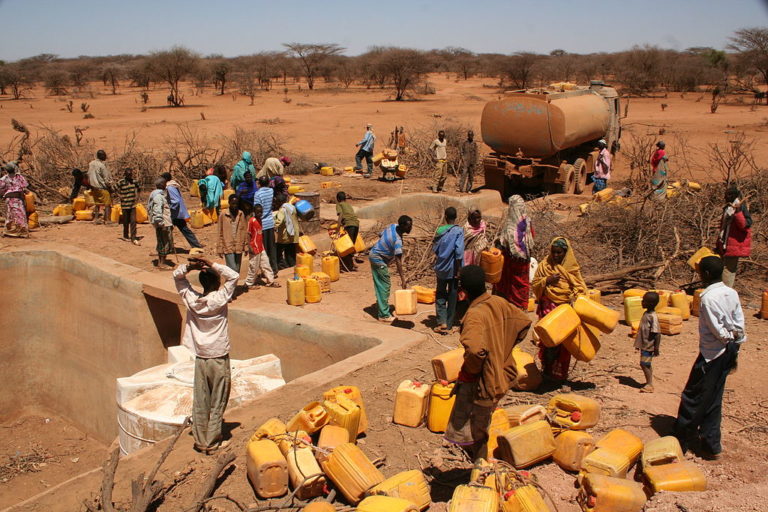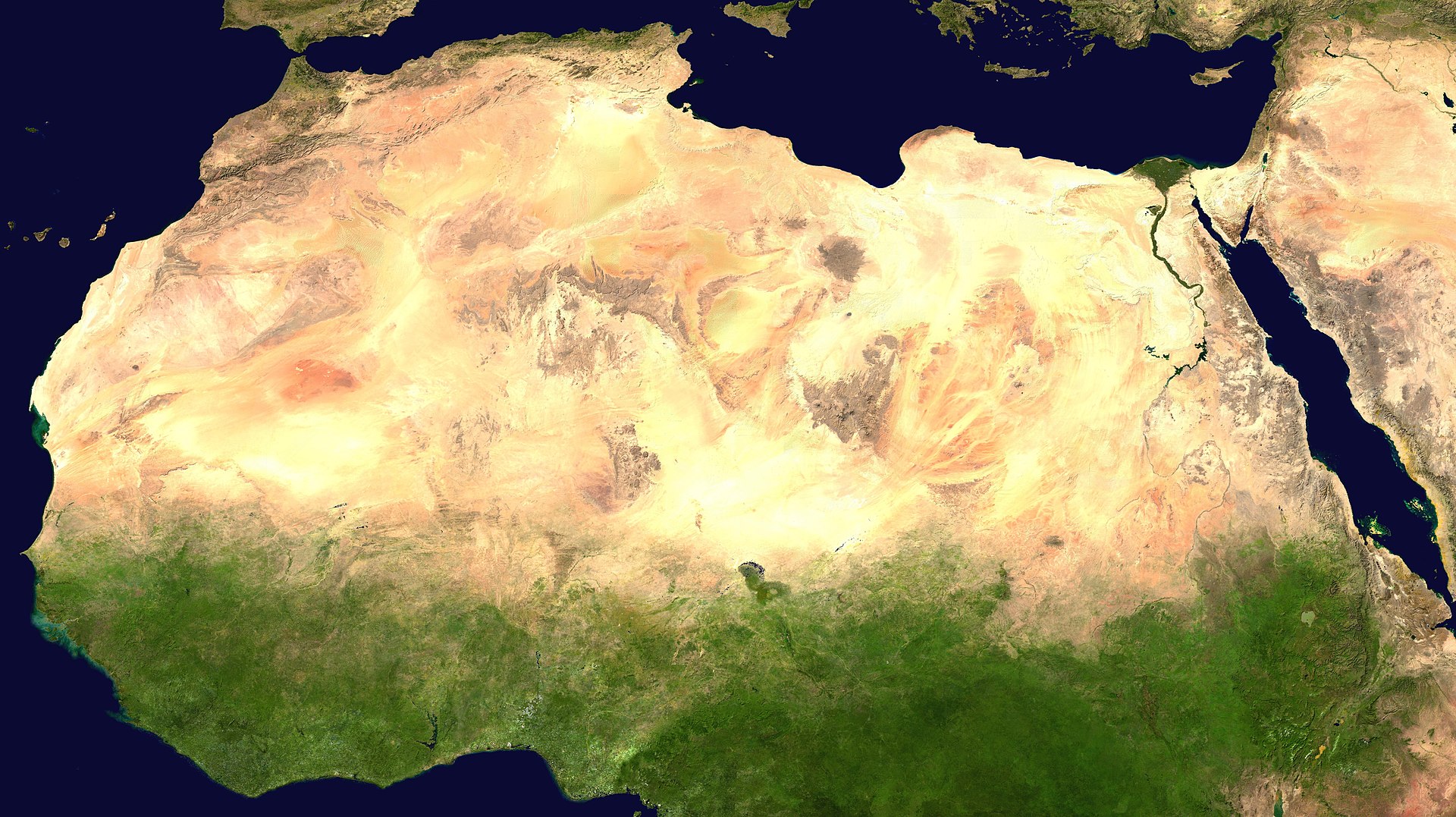The recent One Planet Summit drew to a close bringing hope for a climate-action orientated 2021. The one-day event drew-in around 30 government leaders and representatives – most notably Emmanuel Macron, Boris Johnson, Angela Merkel, and Justin Trudeau– to discuss the urgent need for biodiversity protection and preservation through bold climate action. One of the major outcomes of the summit included $14.3 billion USD in new funding for the Great Green Wall.
The Great Green Wall: Over $ 14 billion committed. #OnePlanetSummit #Biodiversity pic.twitter.com/4oQkfxdJmC
— One Planet Summit (@oneplanetsummit) January 11, 2021
From Senegal in the West to Djibouti in the East, the Great Green Wall (GGW) spans the width of Africa. Currently under construction, its aim is to limit desertification and mitigate the effects of climate change. Unlike other walls that enforce a hard border between nations, the GGW is an African-led movement that involves 26 countries building a cross-continental connection of trees and other vegetation on barren land.
Since the GGW started its journey across Africa in 2007, 18 million hectares (Mha) of land have been restored according to its recent status report. At 8,000km long once completed, it will be the largest living structure in the world. The GGW is a nature-based solution that curbs the effects of climate change and stops desertification.
Some of the main symptoms of climate change include wet regions becoming wetter and dry ones drier. For deserts, this opens the opportunity for growth better known as desertification. Between 1920 and 2013, the Sahara Desert – the world’s largest hot desert – showed a 10% increase in size. Most of this, 554 000 km², was a southern encroachment into the Sahel region which has been identified as a climate change hotspot.
Desertification causes a rapid loss of soil fertility and increases water scarcity, reducing the overall agricultural capacity of lands. This adversely affects the Sahel region population, where subsistence agriculture (farming and livestock) makes up 85% of employment and over 50% of GDP in some cases.
Countries in the Sahel already have some of the lowest scores in the Human Development Index. As desertification intensifies water scarcity and decreases availability in fertile land, this will be driven further down. For locals, this leaves a bleak outcome of increased poverty, mass hunger, and regional migration. These symptoms fuel strife and livelihood-based tensions within local communities which has proven to increase the potential for conflicts, extremism, and criminality.

The 18 million hectares (Mha) of land restored has increased the carbon sequestration potential of the Sahel, storing carbon as woody biomass and in soils. If the pace of land restoration is kept, carbon sequestered by the GGW could be up to 313 million tonnes of CO2 equivalent (MtCO2eq) by 2030. The wall, like most other nature-based solutions, uses these ecological and environmental improvements to complement socioeconomic factors that spur sustainable development.
Related Articles: How Nature Can Lead The Way in Adapting to Climate Change | Nature-Based Solutions in El Salvador
So far, efforts to restore land have led to improved water availability and soil fertility, enabling a return of smallholders to the region. According to TREE Aid, this scale of land restoration is enough to allow 9 million rural families to grow the food they need to survive. On top of improving water and food security, the GGW has rejuvenated the agriculture industry and created more than 335,000 jobs – some of which are also in land restoration activities.
The status report estimates that since 2007, the GGW has spurred a $90 million increase in revenue from income generating activities such as the sale of non-timber forest products. Revitalising these economies improves the health and wellbeing of local communities. The beneficiaries of the GGW are estimated to be numbered at 500,000 and a further 10.2 million when considering wider regional activities outside the GGW intervention area.
The Great Green Wall can – and will – change the lived reality of millions of our people. More jobs, better health, greater stability. More resilient and cohesive communities and stronger inclusive economic growth.
– Ms. Amina Mohammed, the UN Deputy Secretary General
Despite the benefits we see today, the Great Green Wall is far off its goal to restore 100Mha of land by 2030. Only 18% of this target has been achieved so far, which drops down to 4% when only counting land restored within the GGW intervention area. Reaching the 100Mha target will need the annual rate of land restoration to increase from 1.9Mha to 8.2Mha. This colossal scale-up would need a verbatim increase in GGW funding.
The $36 billion to $43 billion in investments needed by 2030 tower over the total domestic and external funding the GGW received in its first decade – $206 million according to GGW founding states and $1.8 billion according to international donors. The ambiguity behind exactly how much funding the project has received thus far is an indication of the lack of fund measurement, reporting and verification of implementation. A major barrier the GGW must overcome if it is to entice more private investors.
"Through international action and solidarity, we can scale up land restoration and nature-based solutions for climate action and the benefit of future generations. pic.twitter.com/VGLtDp83Fd
— Great Green Wall (@GreenWallAfrica) November 27, 2020
The obstacles the GGW faces should not dissuade future efforts but highlight the need for strategy change. Carbon finance may help hurdle some of the financial barriers. Schemes and initiatives could allow purchasing of carbon offsets the GGW has on offer. For instance, the Carbon Offsetting and Reduction Scheme for International Aviation (CORSIA) will aid the International Civil Aviation Organization (ICAO) to achieve its goal of carbon-neutral growth from 2020. These types of initiatives offer promising opportunities of private sector investments to the GGW whilst allowing high-emission industries to reduce their carbon footprint.
As we survey the wreckage of COVID-19, and make our plans to rebuild through robust stimulus packages, it would be a missed opportunity not to see investing in the Great Green Wall as an integral component of an inclusive sustainable economic response and recovery.
– Ms. Amina Mohammed, the UN Deputy Secretary General
The Great Green Wall has the potential to create 10 million jobs and sequester 250 million tonnes of carbon. This shows a clear link to the Sustainable Development Goal (SDGs) 1 No Poverty and SDG 13 Climate Action. While the GGW directly contributes to five other SDGs – such as SDG 2 Zero Hunger and SDG 14 Life on Land – it indirectly links to all 17 SDGs.
The Great Green Wall’s success is not only important for achieving these goals. Its success would demonstrate the effectiveness of nature-based solutions for sustainable development to policymakers and investors. So while the $14.3 billion invested by the One Planet Summit should be celebrated, it should also encourage other investors – support for the Great Green Wall must not cease!
Editor’s Note: The opinions expressed here by Impakter.com columnists are their own, not those of Impakter.com. —In the Featured Photo: Sahara desert from space. Featured Photo Credit: NASA.








